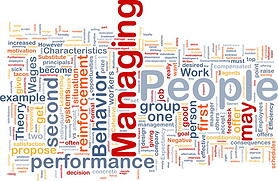 Said by Johann Wolfgang Von Goethe, "The Rule of expectations uses expectations to influence reality and create results." The problems that are encountered are when people fulfill these expectations negatively. Why is this? We all make decisions based on what others expect of us. If you are a clear and precise communicator, disciplined to the point of ensuring your expectations are completely understood both in principle and delivery, then this blog is probably not going to highlight much for you. However, for the many of us in the customer service world, both as a provider and/or a consumer, there seems to be lots of room for improvement.
Said by Johann Wolfgang Von Goethe, "The Rule of expectations uses expectations to influence reality and create results." The problems that are encountered are when people fulfill these expectations negatively. Why is this? We all make decisions based on what others expect of us. If you are a clear and precise communicator, disciplined to the point of ensuring your expectations are completely understood both in principle and delivery, then this blog is probably not going to highlight much for you. However, for the many of us in the customer service world, both as a provider and/or a consumer, there seems to be lots of room for improvement.
One of the successful improvement models that ProSolutions uses for our customers is measuring performance. So we passionately advocate the saying, "What gets measured, gets done!" Expectations need to follow the same principle. What people expect is what actually happens. There are many studies about how to influence behaviors by persuasion and suggestion. The power of suggestion is amazing, so as an employer/manager you would certainly want to be suggesting/influencing the right behaviors. For example, the air about a person or in an office can become toxic if leadership is not communicating expectations through clear and effective language, voice inflections, and body language. People model expected behaviors and act accordingly. If these expected behaviors are unclear, then behavioral decisions are left up for individual interpretation or expression.
There is a book that is certainly an oldie, but a goodie, and provides the answer to what I feel is missing in so many businesses. It is The One Minute Manager by Kenneth Blanchard and Spencer Johnson. This book does such a great job demonstrating three very practical management techniques. How do you get people truly excited about their work? Make it clear what is expected of them. Below are the three management techniques from the book.
One Minute Goal Setting:
One Minute Praising:
- Tell people up front that you are going to let them know how they are doing.
- Praise people immediately.
- Tell people what they did right - be specific.
- Tell people how good you feel about what they did right, and how it helps the organization and the other people who work there.
- Stop for a moment of silence to let them "feel" how good you feel.
- Encourage them to do more of the same.
- Shake hands or touch people in a way that makes it clear that you support their success in the organization.
One Minute Reprimand:
The training and learning aspect that I really think is effective with these methods is the timing. Fast communication on the behavior is the key to helping your employees understand the desired expectation, as well as promoting a very healthy and successful work environment.
Remember: what get's measured, get done...need any help?

